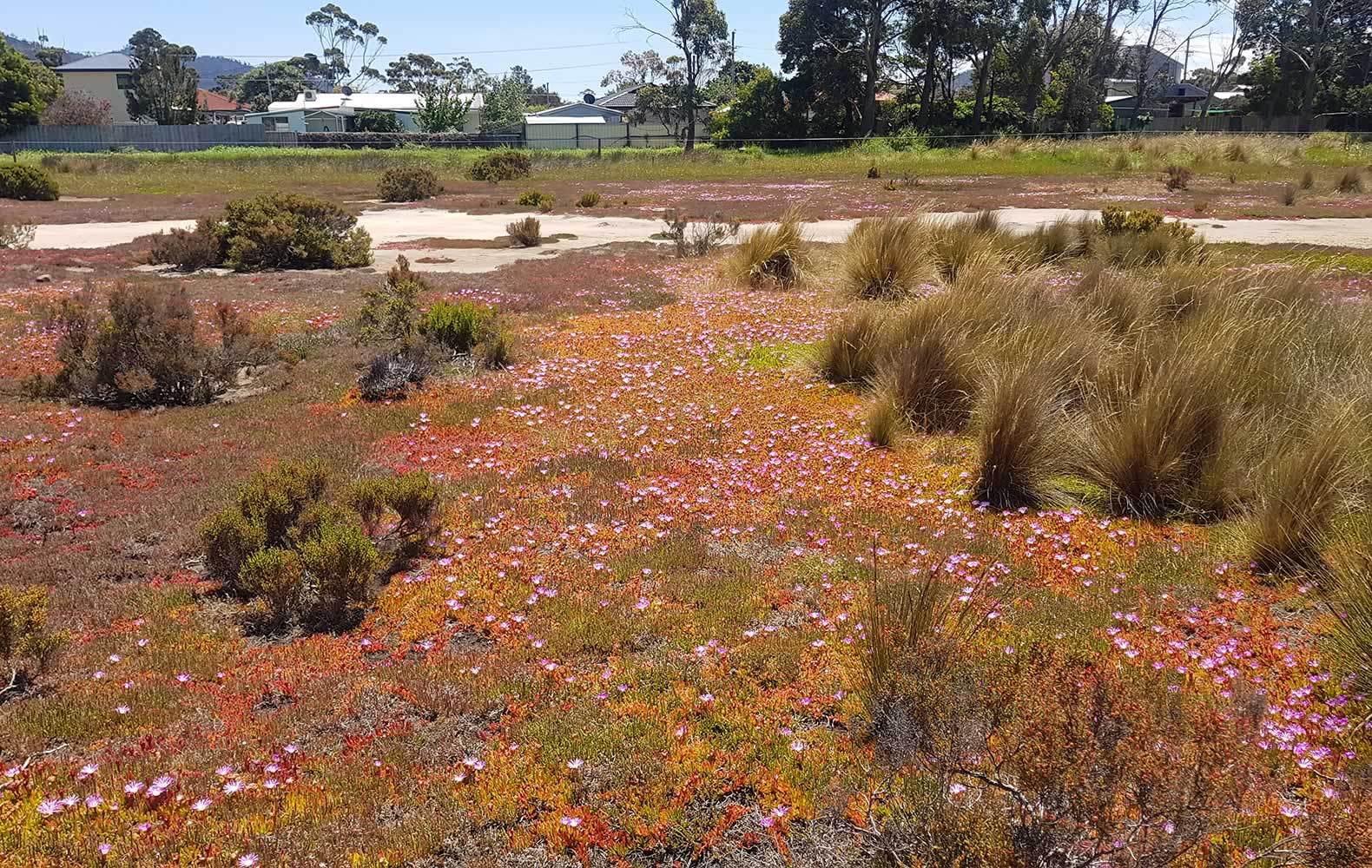Saving our saltmarshes

Lauderdale Racecourse Flat.
Image: Derwent Estuary Program
Saltmarshes are one of the Derwent’s gems and these tide-dependent wetland communities are important ecological assets. They are critical for feeding and breeding fish and birds; act as filters to improve water quality; are buffers against storm surges and sea level rise; and attenuate global warming by sequestering (or storing) carbon. Here in the Derwent estuary we have lost about half of our saltmarshes, and what we have left rates poorly in terms of future retreat options, and patch size.
The summer of 2018–19 saw the DEP, together with UTAS and local wetland expert volunteers, conduct 32 surveys across 19 saltmarsh sites between the Jordan River and South Arm. Plants, birds and human impacts were surveyed, old aerial photos were studied, as was modelling of where saltmarshes may move to (if land is available) as the sea levels rise. Weeds, litter and informal tracks were the main issues at most sites, with lack of signage and buffer plantings also being common.
Survey recommendations include several local saltmarsh rehabilitation projects, including saltmarsh expansion, and work has begun on their implementation in cooperation with government and private land owners. A report with land management recommendations will be finalised for each of the 19 sites later in 2019 and will be available on the DEP website.
Friday 20 September 2019
